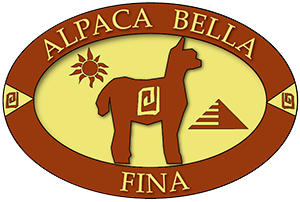- Home
- Alpacas For Sale
- Herd Sires
- Contact Us
- Seasons at Our Farm
- Alpaca Articles
- Financial Aspects of Alpaca Ownership
- Who Buys Alpacas?
- Alpaca Supply & Demand
- Alpaca Values
- Capital Requirements
- Hands-on Alpaca Ownership
- Financial Observations
- Tax Consequences of Owning Alpacas
- Methods of Financing your Alpaca Purchase
- Creating a Herd
- Alpaca Purchase Contracts
- Why Not Have Uncle Sam Help You Buy Your Alpacas?
- Making Sense of Microns
- Ancient History of Alpacas
Alpaca Values
Alpaca Values
An alpaca rancher with a small herd on a small acreage can expect to harvest his animals’ fleeces and sell their offspring profitably. The value of alpaca fleece and finished products made from that fleece is the economic underpinning of the future market for alpacas. Breeders outside of South America are beginning to organize fiber co-ops for the commercial processing of the fleece. Domestic fiber is often sold to cottage industries that revolve around hand spinning and weaving. Each animal will produce around three to ten pounds of fleece a year. Alpaca ranchers sell their fleece in a variety of ways including raw fiber, washed and carded fiber, yarns, and finished products, with lucrative margins. Profits or fiber production vary based on each farm’s model for fiber sales.
The current alpaca industry is based on the sale-quality breeding stock, which commands premium prices. Female alpacas usually begin breeding at between 15-18 months of age, while most males can successfully impregnate (or “settle”) a female at about three years. The females produce one baby per year (twins are uncommon) during a reproductive life of about 10-12 years.
Factors that influence individual alpaca prices include color, conformation, fleece quality and quantity, age, and gender. Females sell for more money on average than males, but herd sire quality males have historically commanded the highest individual prices. Breeders often prefer one alpaca color to another, however the parents’ color does not necessarily guarantee a cria of the same color. There are many accepted theories regarding alpaca color heritability, and more research is needed to further our understanding of this issue. Of more importance to most breeders is the overall physical soundness, or “conformation” of the animal. In addition to color, fleece, density, uniformity, fineness, luster, and staple length will also affect value. Well-conformed alpacas with superior fleece characteristics sell for higher prices.
The range of value for females has remained fairly consistent during the two decades that alpacas have been available to the public in North America: generally between $12,000 and $25,000. Females with unique attributes have been known to sell for $50,000 or more. Proven, top-quality herd sires typically sell for $20,000-$50,000, and the highest quality males with unique characteristics, or exceptional offspring on the ground, have sold in excess of $150,000. (The current world record, set at auction in 2002, is $265,000.)
Many breeders start with several breeding age females and perhaps one male. Other new breeders may elect to start with several young animals or a breeding pair. There is an approach suitable for your level of interest and financial position. Alpacas are much like diamonds. The market pays a premium for the finest examples of the breed, and a beauty is also in the eye of the beholder.
Another benefit of owning alpacas relates to the concept of compounding. Savings accounts earn interest, which if left in the account, adds to the principal. The increased principal earns additional interest, thereby compounding the investor’s return. Alpaca breeders also witness the effects of compounding over time. Alpacas reproduce almost every year, and about one-half of their babies are females. When you retain the offspring in your herd, they begin producing babies. This is referred to as “alpaca compounding.”
Tax-deferred wealth building is another “alpaca advantage”. As your herd grows, you postpone paying income tax on its increasing value until such time as you begin selling the offspring. Most breeders elect to sell all or some of the annual offspring production for practical reasons, such as recovering their initial cash flow, acreage and building limitations, and time constraints.
Alpacas are also fully insurable against theft and mortality. Insurance can be purchased for your stock regardless of age. Average insurance rates are 3.25% of the value of the animal, or $325 for every $10,000 of insurance.
